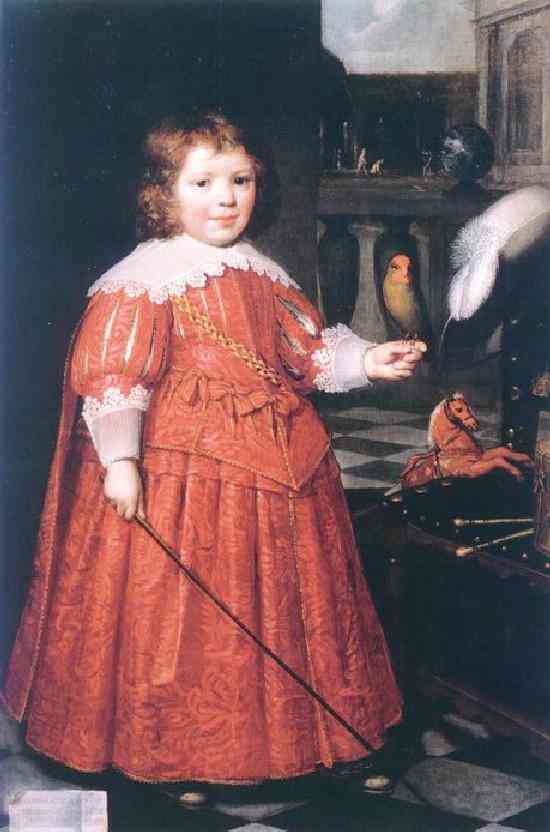
Figure 1.--Joannes de Ruyter was 5 years old when he was painted by Jan Anthonisz. van Ravesteyn in 1632. The gold chain, the parakeet or parrot and the sumptuous clothing characterize Joannes as a child of the Dutch upper class of his time. |

|
Jan Anthonisz Van Ravesteyn was one of the upper class’ most prominent portaitists of his time. He learnt his trade with Michiel van Mierevelt at Delft and later established himself in his native The Hague. We note a portrait of 5-year old
Joannes de Ruyter painted in 1632.
Jan Anthonisz Van Ravesteyn was one of the upper class’ most prominent portaitists of his time. He learnt his trade with Michiel van Mierevelt at Delft and later established himself in his native The Hague.
Van Ravesteyn was een de meest prominente portretschilders van de bovenklasse in zijn tijd. Hij leerde het ambacht in Delft bij Michiel van Mierevelt en vestigde zich later in zijn geboortestad Den Haag
The gold chain, the parakeet or parrot and the sumptuous clothing characterize Joannes as a child of the Dutch upper class of his time.When Jan van Ravesteyn painted this portrait in 1632 Joannes was 5 years old. His father David was advocate at the Court of Holland and president of the Sovereign Council of Brabant. His mother Lucretia van der Meulen was from a well known merchant family. The couple themselves sat for Van Ravesteyn in 1639. David’s portrait is in the Academy of Arts in Honolulu and Lucretia’s is in the collection of the New York Historical Society.
De gouden ketting, de parkiet of papegaai en de kostbare kleding karakteriseren Joannes als een kind uit de bovenlaag van de Hollandse samenleving in zijn tijd.Toen Jan van Ravesteyn in 1632 dit portret van hem schilderde was hij 5 jaar. Zijn vader David was advocaat voor het Hof van Holland en president van de Soevereine Raad van Brabant. Zijn moeder Lucretia van der Meulen kwam uit een bekend koopmansgeslacht. Het echtpaar liet ook hun eigen portretten door Van Ravesteyn schilderen. Dat van David bevindt zich in de Kunstacademie in Honolulu, dat van Lucretia behoort tot de verzameling van de Geschiedkundige Vereniging van New York.
Joannes is wearing a jerkin and skirt made of a scarlet fabric with a flower pattern woven into it. The wide upper sleeves and the jerkin’s breast are fitted with vertical slits that show a lining of white silk. The waist is adorned with red and gold ribbons tied into bows. If the upper sleeve falls wide, the lower one fits snugly around the arm and is finished with tubular cuffs of white linen. The broad, flat collar is of the same fabric and both are trimmed with scalloplike lace. On the high-backed chair is Joannes’grey hat whose broad flat brim is adorned with white plumes.An interesting detail are the boy’s props. A hobbyhorse is leaning to the chair, his drum and drumsticks ar lying on it. These are typical toys of a boy in those times. The parrot may have been Joannes’favourite playmate but very probably serves a metaphorical purpose as well. In contemporary literature the parrot often acts as en example of eagerness to learn.
Joannes draagt een wambuis en rok, beide gemaakt van een scharlakenrode stof met ingeweven bloempatroon. De wijde bovenarmmouwen en het borststuk vertonen verticale spleten die de witzijden voering laten zien. Op de taille is het wambuis versierd met een rij rood-met-gouden lintstrikken. De jongen draagt een dubbele gouden ketting schuin over de borst. Valt de bovenmouw wijd, de ondermouw sluit nauw aan om de arm en is voorzien van kokervormige linnen manchetten. Van het zelfde materiaal is de brede platte schouderkraag. Beide zijn afgezet met gelobde kantwerk. Op de rugleuning van de stoel hang Joannes’grijze hoed, voorzien van een brede platte rand en witten pluimen. Interessante details zijn het stokpaardje dat tegen de stoel aanleunt en de trommel en trommelstokken die op de stoel liggen.Dit speelgoed was typisch voor een jongen in die tijd. De papegaai wordt hier niet slechts afgebeeld als Joannes speelkameraadje maar heeft ook een metaforische betekenis. In de contemporaine pedagogische literatuur figureert de papegaai niet zelden als een voorbeeld van leergierigheid.
Navigate the HBC Art pages:
[Return to the Main Dutch national art page]
[Return to the Main individual artist M-R page]
[Chronology]
[Country]
[Individual Artists]
[Styles]
Navigate related Boys' Historical Clothing Web Site pages:
[Main Dutch page]
[Hair styles]
[Collar bows]
[Dresses]
[Kilt suits]
[Kilts]
[Fauntleroy suits]
[Fauntleroy dresses]
[Sailor dresses]
[Pinafores]
[Smocks]
